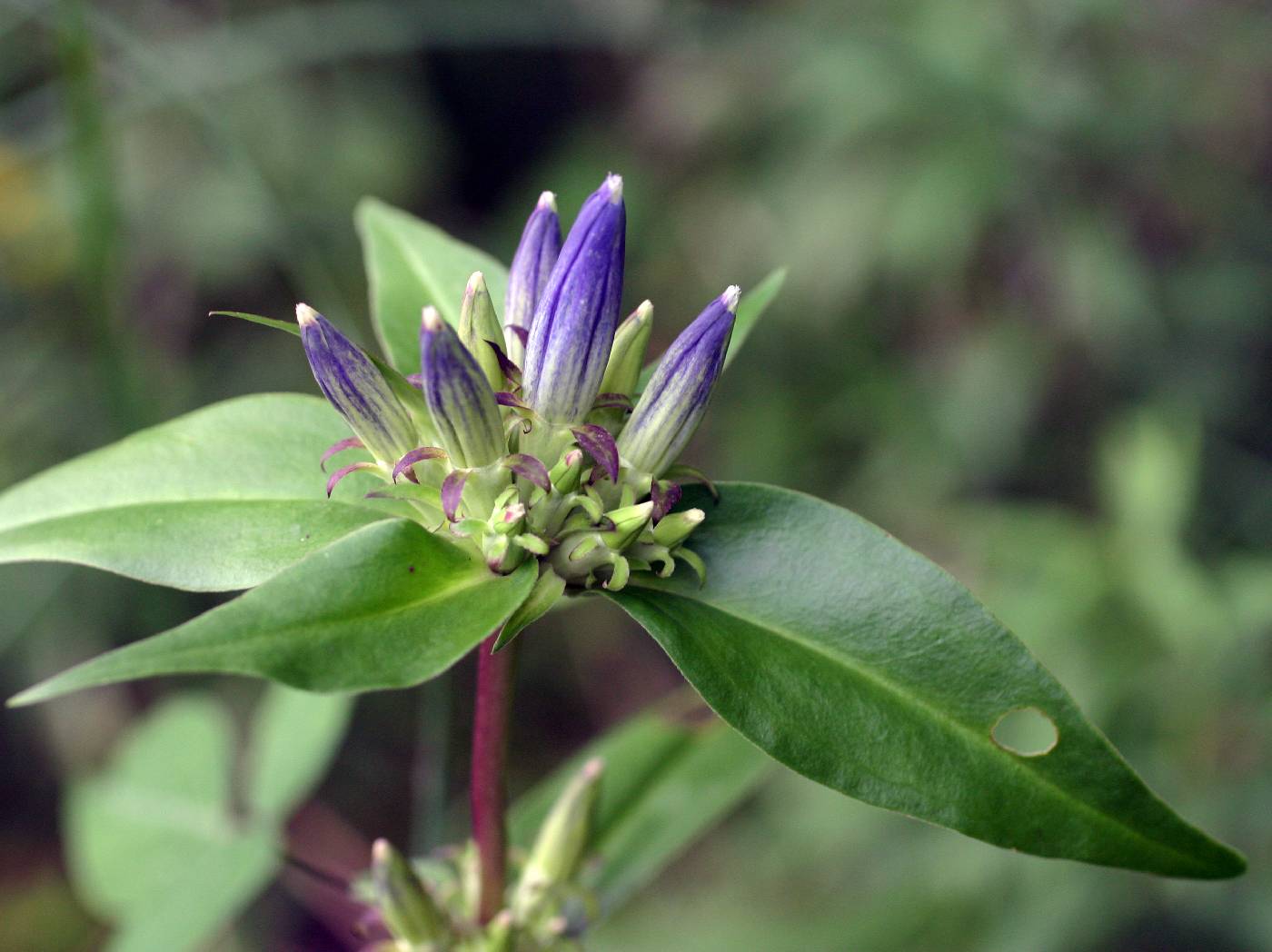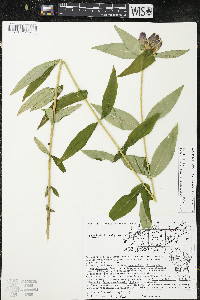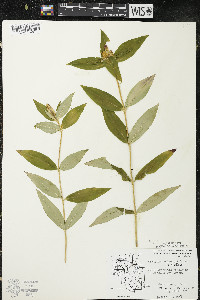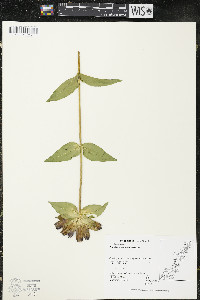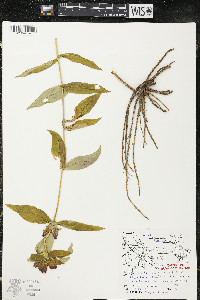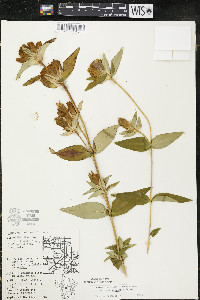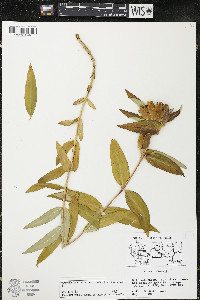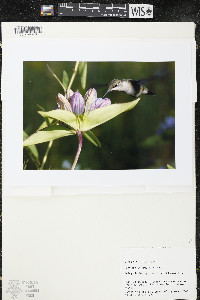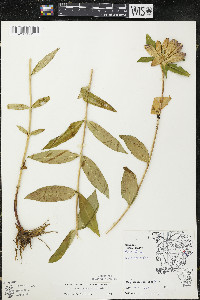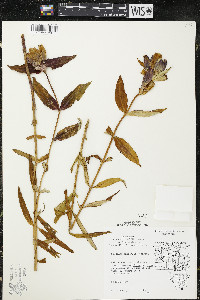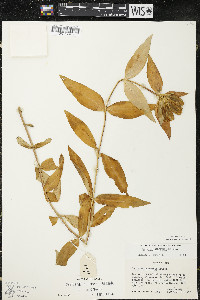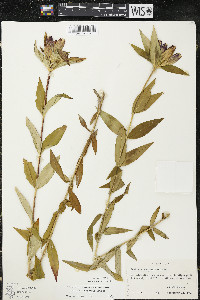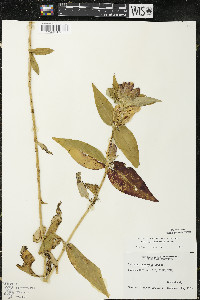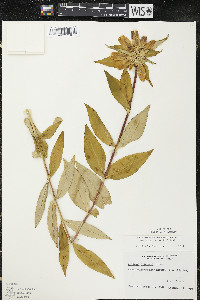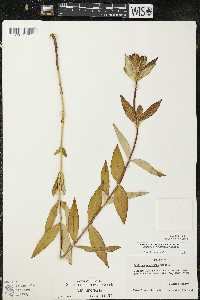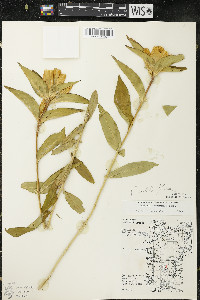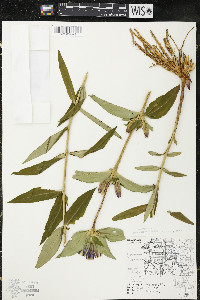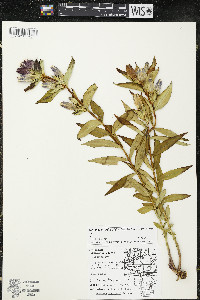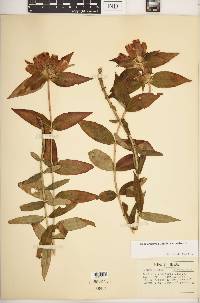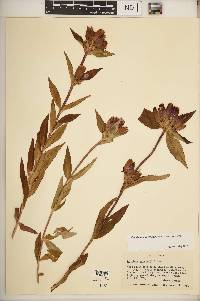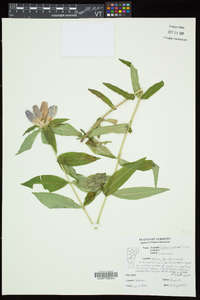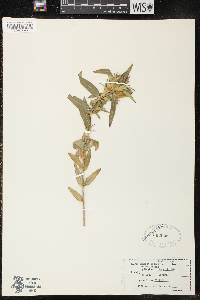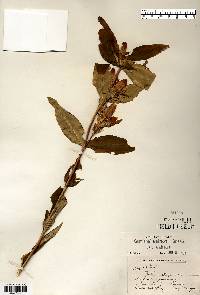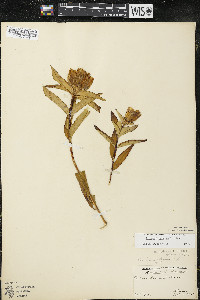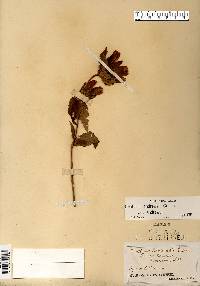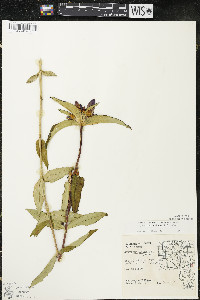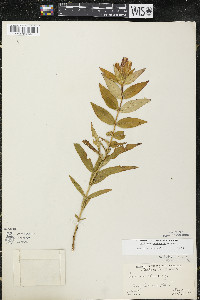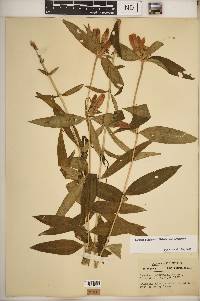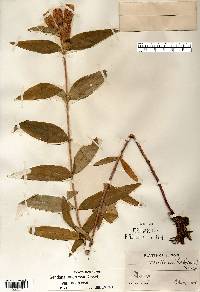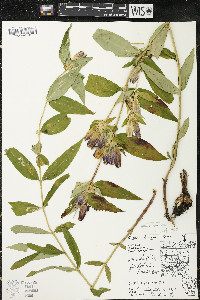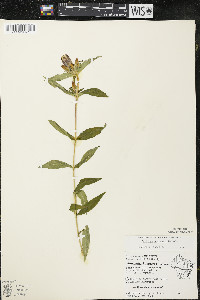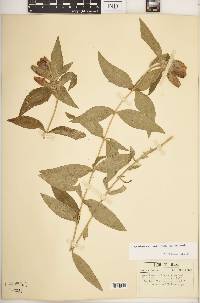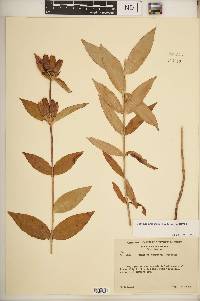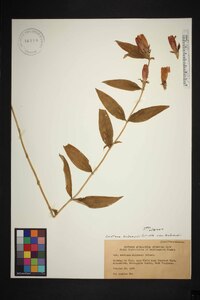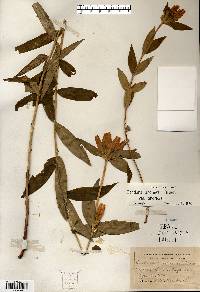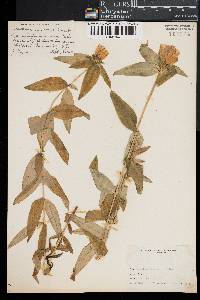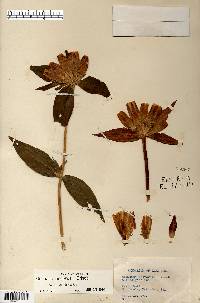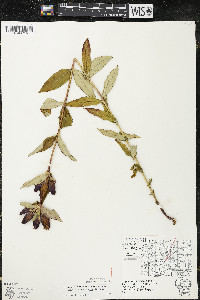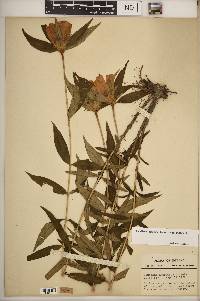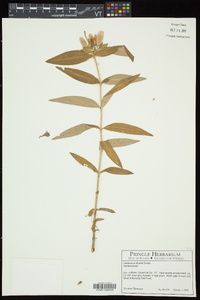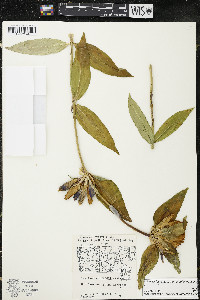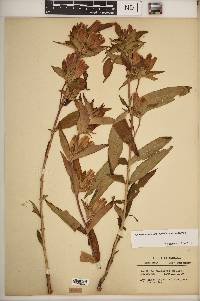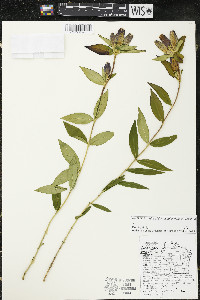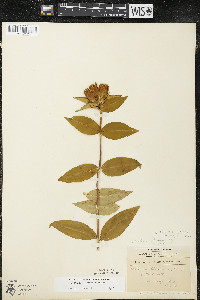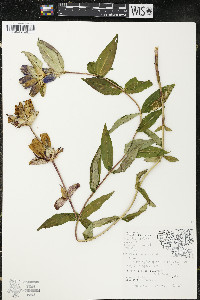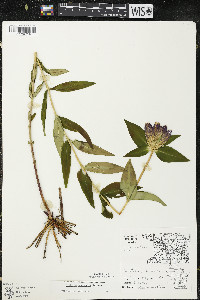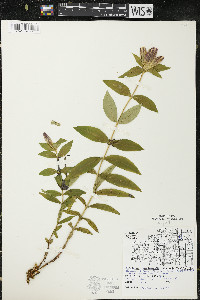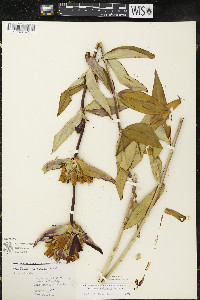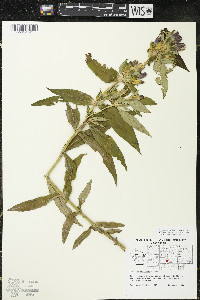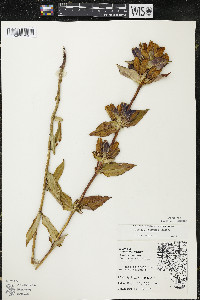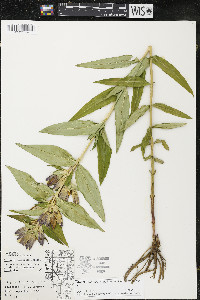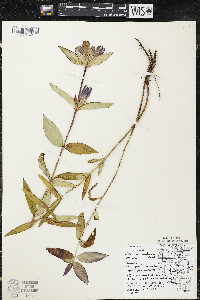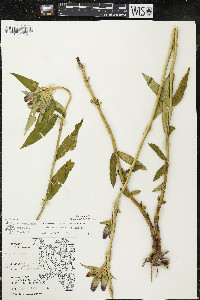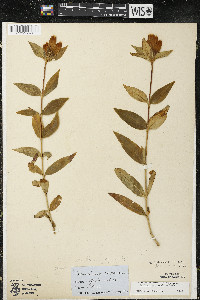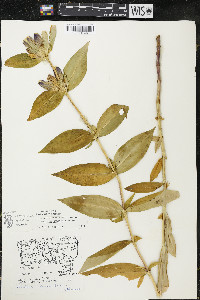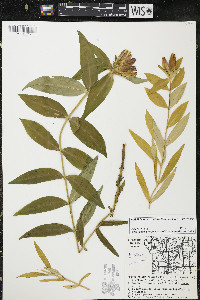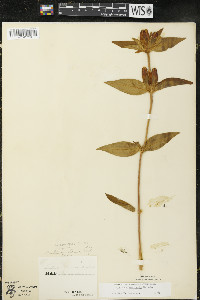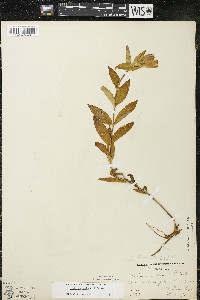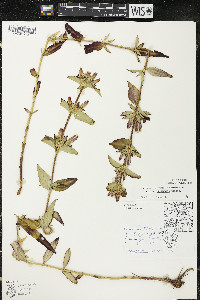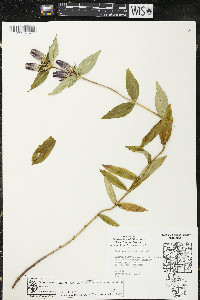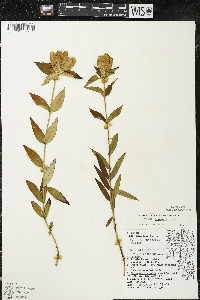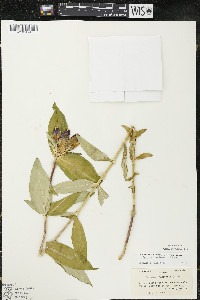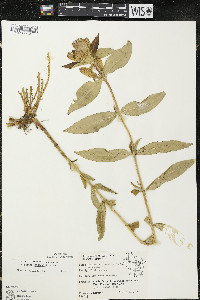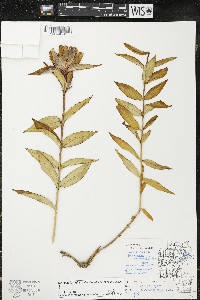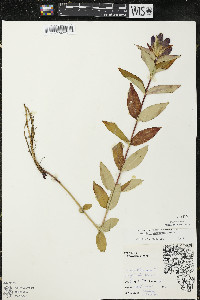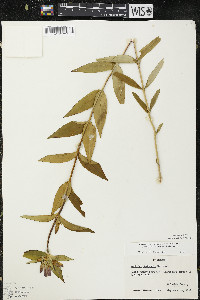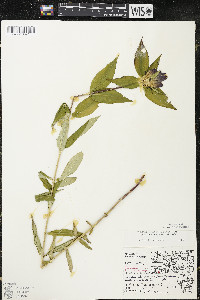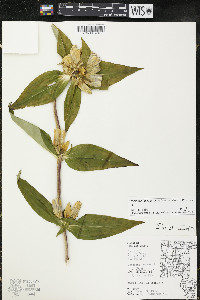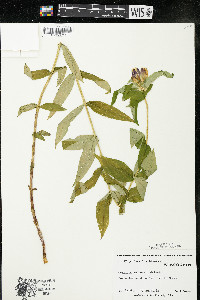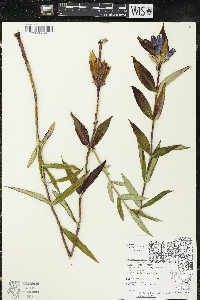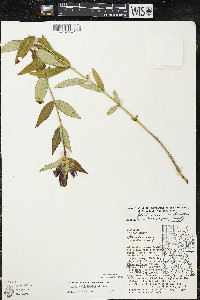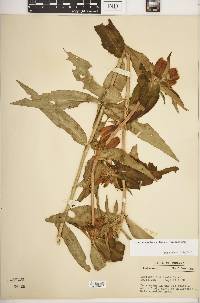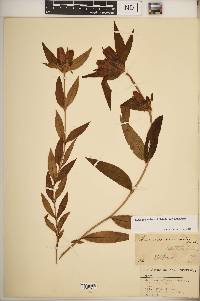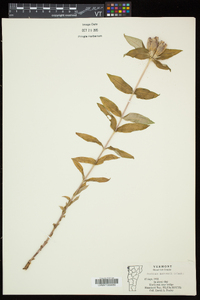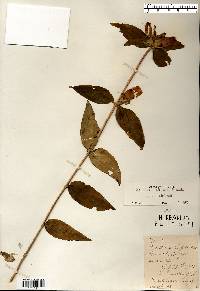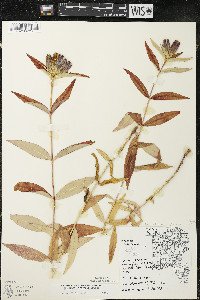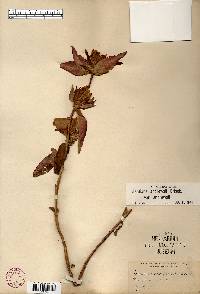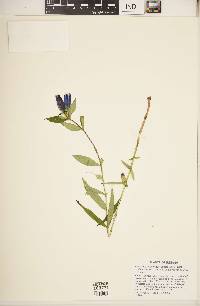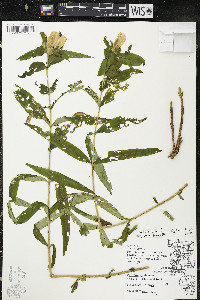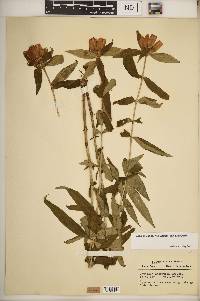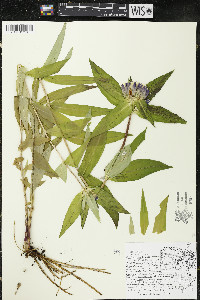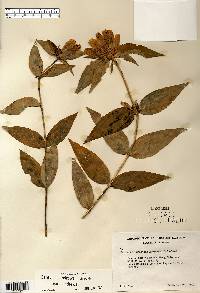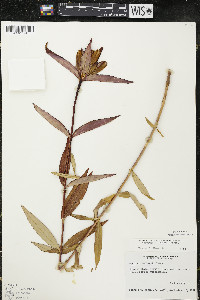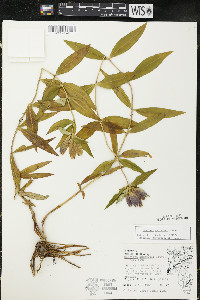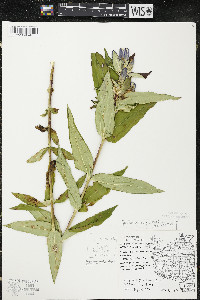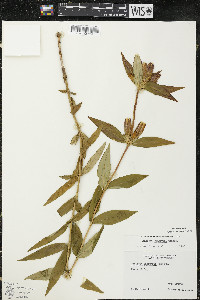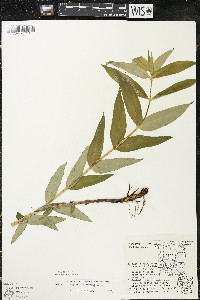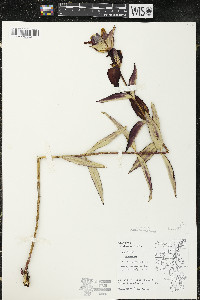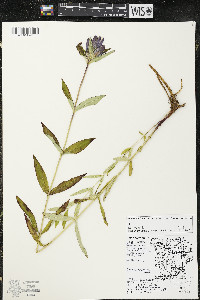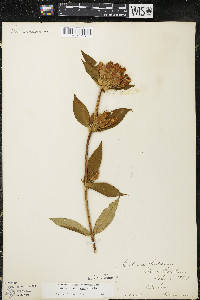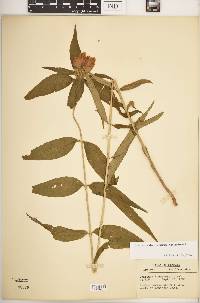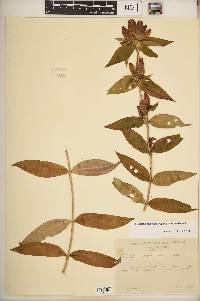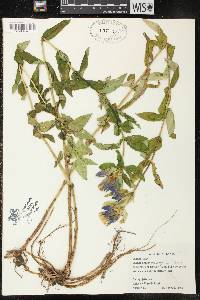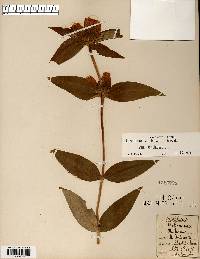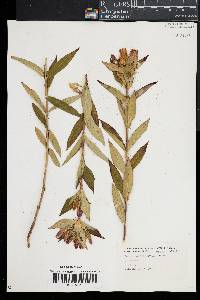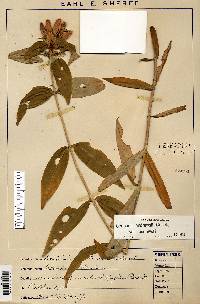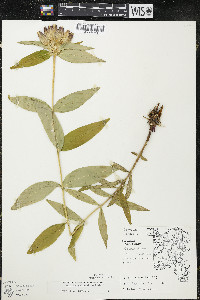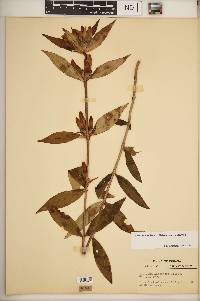Gentiana andrewsii var. andrewsii
|
|
|
|
Family: Gentianaceae
Closed Bottle Gentian
|
Perennial herb 10 cm - 1.2 m tall Leaves: opposite, stalkless, medium green, 3 - 16 cm long, 1 - 5 cm wide, more or less lance-shaped, three- to five-nerved, non-toothed, but with rough-bristly or prickly-hairy edges. The leaf shape changes along the stem, with the upper leaves being lance- to egg-shaped; the middle leaves being more narrow and grading toward elliptic; the lower leaves being more oblong, and much smaller than those above; and the lowest leaves reduced to scales. Inflorescence: of one to twenty-five, often stalkless, erect flowers clustered at the the stem apex, and often also in the axils of the upper one to six leaves, or additionally at the ends of short branches. The terminal inflorescence is normally subtended by two pairs of large, leaf-like bracts. Flowers: bluish with white markings, 3 - 4.5 cm long, radially symmetric, club-shaped, closed, and subtended by a pair of linear to inversely lance-shaped bracts. Sepals: five, but fused into a 0.8 - 1.4 cm long, hairless tube, then separating into 0.2 - 1.5 cm long, 0.8 - 6.4 mm wide, lance-shaped lobes with rough-bristly edges. Petals: five, but fused with longer, whitish membranes (plaits) between the erect, thin, narrow, tiny, abruptly short pointed petal lobes. The separate portion of the petal lobes is scarcely 1 mm long, and is obviously surpassed by the 0.75 - 4 mm long, 2.5 - 7 mm wide, fairly erect, flat-topped, fringe-tipped plaits, which form most of the top of the flower. While the petal tube is whitish at its base, it becomes more colored with blue upwards (changing to blue-violet with age), and the nearly white alternating plaits are usually pale blue where they are fused to the petals. Stamens: five, attached to the inside of the petal tube, the filaments 0.8 - 1.2 cm long, with the anthers fused together. Pistil: with a single-chambered, superior ovary; a short, stout style; and a two-lobed stigma. There is a whorl of nectar glands present around the base of the ovary, though they are not attached to the fused petal tube base. Fruit: a single-chambered, two-valved, elliptic capsule containing numerous seeds. Stems: one to twenty, erect (occasionally somewhat decumbent), hairless, and usually unbranched. Seeds: flattened, winged, and smooth. Similar species: Gentiana andrewsii var. andrewsii is very similar to the more rare, western variety, G. andrewsii var. dakotica, but that variety can be distinguished by its better developed petal lobes, which are triangular to rounded, and often up to 3 mm long. Two other species of closed gentians in our area which may be confused with G. andrewsii var. andrewsii include G. alba, which differs by having whitish flowers, and completely hairless leaf edges and sepal lobes; and G. saponaria, which has much narrower leaves (under 2 cm wide) with shorter, not long pointed tips, and the petal lobes are about as long as the fused plaits. Flowering: August to October Habitat and ecology: Occasional in damp prairies, wet meadows, and other moist open ground. Occurence in the Chicago region: native Notes: The only observed pollinators for this gentian are bumblebees, which appear to be the only insects strong enough and smart enough to open the closed flowers (Costelloe 1988). Etymology: Gentiana is named after Gentius, king of Illyria, who supposedly discovered a medicinal value for the yellow gentian. Andrewsii is named after the English botanical artist Henry C. Andrews. Author: The Field Museum From Flora of Indiana (1940) by Charles C. Deam Infrequent in all parts of the state except in the knobstone area, in low woods, roadside ditches, low ground about lakes, and interdunal flats. Flowers vary in color from light to dark blue although I have one specimen from Steuben County that is maroon. ...... Indiana Coefficient of Conservatism: C = 4 Wetland Indicator Status: FACW |

